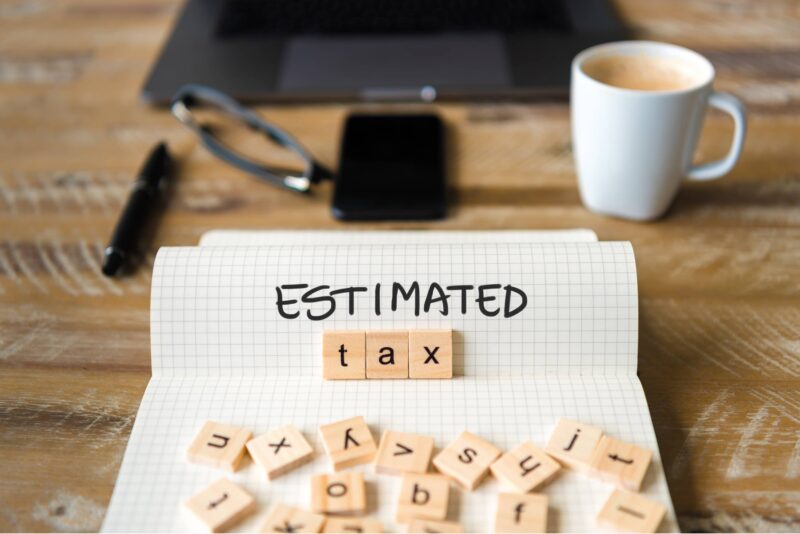Starting a small business can be a great way to make your own mark in the world, but it also comes with its own set of challenges. One of which is figuring out how to pay your taxes – thankfully, there are plenty of resources available to help you do that. In this article, we’ll take a look at some of the most common methods small businesses use to calculate their taxes, and give you tips on how to choose the right one for your business.
Tax Types
Small business taxes can be confusing, but there are a few basic concepts to keep in mind.
– The first is that most small businesses are taxed at the individual level. This means that each owner of a small business is responsible for paying their own taxes.
– The second main concept to keep in mind is deductions. A lot of small business taxes revolve around deductions, which means that you can reduce your tax liability by taking specific deductions on your tax return.
– Finally, small businesses must file quarterly tax returns. This means that you have to submit your tax paperwork by the 15th day of the month following the quarter in which you earned income.
Tax Calculations

Small business taxes can be complicated, so it’s important to have a good understanding of how they work. In this article, we’ll provide you with a step-by-step guide to calculating your small business taxes.
- Start by estimating your annual income and expenses. This will help you figure out your taxable income.
- Next, figure out your taxable income by adding your gross income (income from all sources) and subtracting your allowable deductions. You may be able to claim some business expenses on your personal tax return, but be sure to check first!
- Finally, determine your small business tax rate by dividing your taxable income by your total adjusted gross income (AGI). This will give you the percentage of your income that will be taxed as a small business deduction.
Paying Business Taxes
Taxes are one of the main expenses for any business. However, not all businesses are required to pay taxes. This article will explain how to calculate small business taxes.
– The first step in calculating your small business taxes is figuring out what type of business you are operating. There are three types of businesses: sole proprietorships, partnerships, and corporations. Each has its own tax rules and requirements. You can find more information on the IRS website.
– Once you have determined which type of business you are in, you need to figure out your taxable income. This income is the amount of money you earned from your business activities that was subject to taxation.
– You next need to determine your tax liability. This is the total amount of taxes that you will owe for the year. To do this, you will need to calculate your tax brackets and add them up based on your taxable income. Calgary tax consulting can help you with this process.
– Now it’s time to figure out how much money you will need to pay in taxes. You will need to find your tax rate, which is the percentage of your taxable income that will be paid in taxes.
– Finally, you will need to find out how much money you will need to save each month in order to have enough money to pay your taxes when they are due. This is called your monthly payment plan. To figure out your monthly payment plan, multiply your tax liability by 12 and then divide this number by 12 to get the amount you will need to save each month.
Estimated Taxes

Small business taxes can be complex, but with the help of a tax accountant or software, you can figure out what you owe without too much trouble. In this article, we’ll cover the basics of calculating your small business taxes using estimates.
– To begin, you’ll need to know your taxable income and your estimated tax rate. Taxable income is the money you earn from operating your small business, minus certain deductions. Your tax rate is the percentage of your taxable income that you’ll pay in taxes. In order to calculate your taxes, you’ll need to figure out how much money you owe in federal taxes and state taxes. Federal taxes are paid by businesses based on their income. The more money you make, the more you’ll pay in federal taxes. State taxes are also based on your income, but they vary from state to state.
– Once you know how much money you owe in federal and state taxes, you can figure out how much money you actually paid in taxes using an estimate called the estimated tax calculator. This calculator takes into account your estimated tax rate, taxable income, and any deductions you may have taken.
If you ever find yourself with a large tax bill that you don’t think you can afford, don’t panic. There are many ways to reduce or even avoid your taxes altogether. Talk to a tax accountant or software to find out what options may be available to you.
Business Casualty Insurance
Small business owners can protect their businesses with insurance, but not all forms of coverage are the same. The cost of traditional commercial insurance can be prohibitive for small businesses. That’s where small business casualty insurance comes in.
This form of insurance protects businesses from the risks associated with accidents, injuries, and property damage. While it does not cover losses due to theft or vandalism, small business casualty insurance typically includes coverage for these events.
The cost of small business casualty insurance depends on the type of coverage and the risk posed to the business. However, policies typically offer discounts for bundling coverage with other types of insurance.
Businesses should investigate their options for small business casualty insurance and compare rates before making a decision. A policy that meets the needs of the business is likely to be less expensive than traditional commercial coverage.

Conclusion
When it comes to taxes, there is a lot you need to know. In this guide, we will discuss how to calculate small business taxes using various online tools and calculators. By understanding the basics of tax calculation, you can save yourself time and money in the long run.


